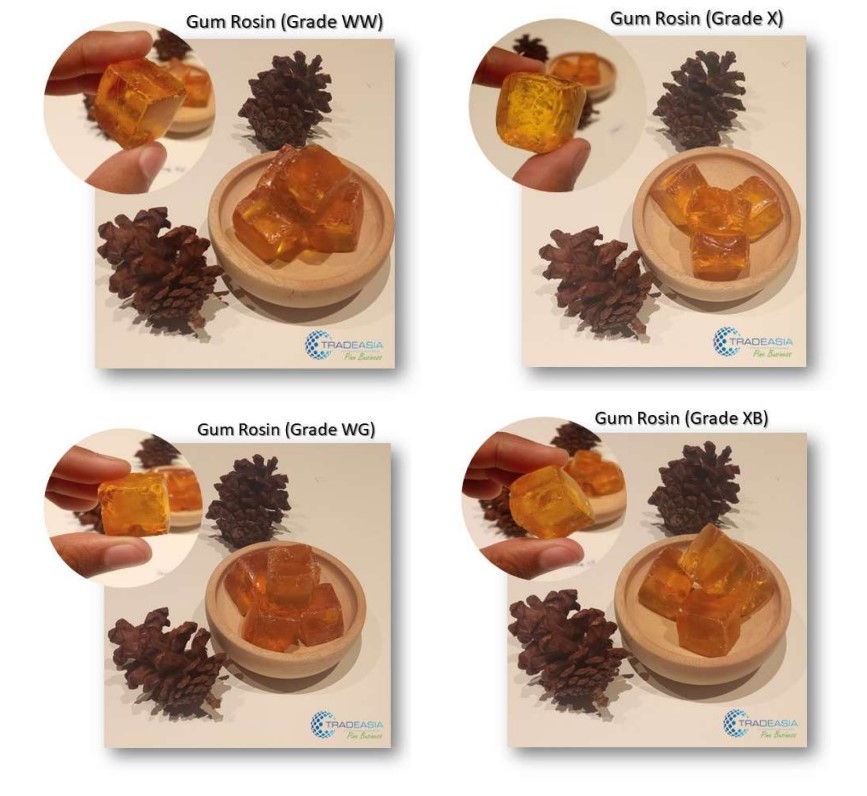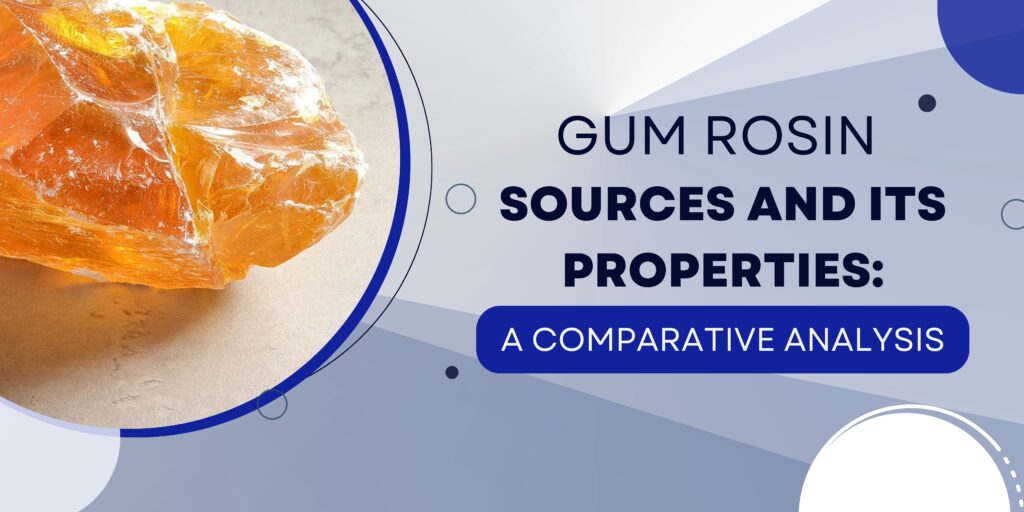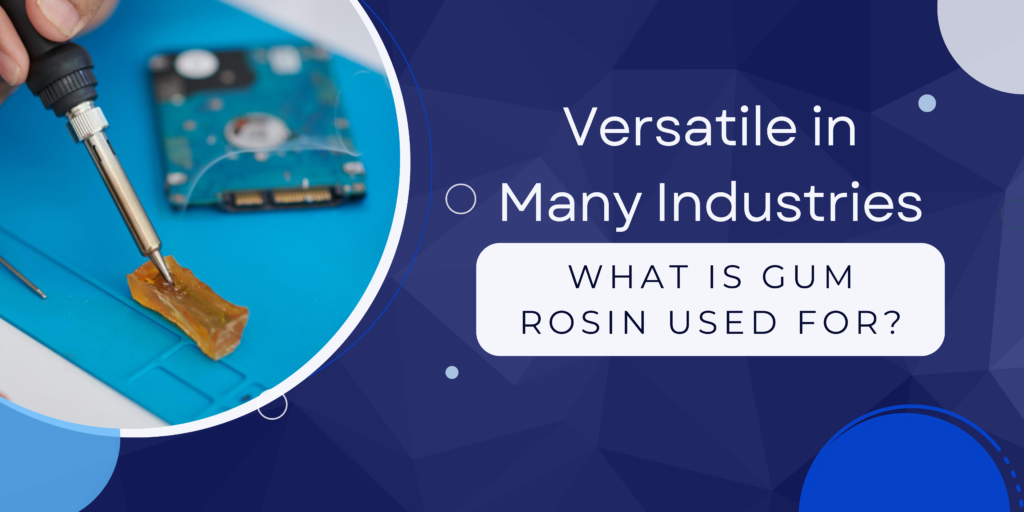
Introduction
Gum rosin, derived from pine trees, has been a valuable ingredient in numerous industries for centuries. Particularly in the adhesive industry, it plays a vital role in enhancing adhesive performance and properties. This article explores the versatile applications of gum rosin in adhesives, highlighting its benefits and contributions to adhesive formulations. Obtained through tapping the sap or resin of pine trees, gum rosin undergoes processing to create the raw material. Composed primarily of resin acids like abietic acid, pimaric acid, and levopimaric acid, gum rosin serves as a key component in adhesive manufacturing.
Enhancing Adhesive Performance
Gum rosin offers several advantages when incorporated into adhesive formulations, making it a valuable component in the adhesive industry. Here are some ways gum rosin enhances adhesive performance:
a. Tackiness and Cohesion: gum rosin contributes to the tackiness of adhesives, allowing them to stick to surfaces effectively. It enhances the adhesive’s ability to form a strong bond by promoting cohesion between the adhesive and the substrates being bonded.
b. Bonding Strength: the presence of gum rosin in adhesives can significantly improve bonding strength. It acts as a reinforcing agent, increasing the adhesion between materials and providing better resistance to shear forces.
c. Viscosity Control: gum rosin helps in controlling the viscosity of adhesives, ensuring optimal flow properties during application. By adjusting the gum rosin content, adhesive manufacturers can achieve the desired consistency and ease of application for different adhesive types.
d. Heat Resistance: adhesives formulated with gum rosin exhibit improved heat resistance. This property is particularly beneficial for applications where adhesives are exposed to high temperatures, such as in the automotive, aerospace, and electronics industries.
Types of Adhesives Utilizing Gum Rosin
Gum rosin finds its application in various types of adhesives due to its unique properties. Some notable adhesive types utilizing gum rosin include:
a. Hot Melt Adhesives: Hot melt adhesives, widely used in packaging, woodworking, and product assembly, rely on gum rosin for excellent tack, bonding strength, and fast-setting properties. Gum rosin acts as a key ingredient in formulating hot melt adhesives with different melting points and viscosities.
b. Pressure-Sensitive Adhesives (PSAs): Gum rosin plays a vital role in formulating PSAs, which are widely used in labels, tapes, and medical applications. It helps in achieving the required tack, peel strength, and adhesion properties essential for these applications.
c. Construction Adhesives: Gum rosin finds applications in construction adhesives used in bonding materials like wood, concrete, and tiles. It contributes to the overall strength and durability of the adhesive, ensuring long-lasting bonds.
d. Reactive Adhesives: Reactive adhesives, such as epoxy and polyurethane adhesives, benefit from the addition of gum rosin. It enhances the adhesive’s reactivity and improves the adhesion to various substrates, making it suitable for demanding applications.
Environmental Considerations
Apart from its functional benefits, gum rosin offers environmental advantages in the adhesive industry:
a. Renewable and Biodegradable: Gum rosin is a natural and renewable resource, making it an environmentally friendly alternative to synthetic resins. It can be sustainably harvested from pine trees without causing significant harm to the environment.
b. Low Toxicity: Gum rosin is considered non-toxic and does not pose health hazards when used in adhesives. It provides a safer alternative compared to certain synthetic resin counterparts that may contain harmful chemicals.
c. Reduced VOC Emissions: Volatile Organic Compounds (VOCs) emitted by adhesives can contribute to air pollution and have potential health implications. Gum rosin-based adhesives can help reduce VOC emissions, promoting healthier indoor and outdoor environments.
Conclusion
Gum rosin plays a crucial role in the adhesive industry, enhancing the performance, durability, and versatility of various adhesive formulations. Its ability to improve tackiness, bonding strength, viscosity control, and heat resistance makes it a valuable ingredient in adhesives used in a wide range of applications. Moreover, gum rosin’s renewable nature and environmental benefits contribute to the development of sustainable adhesive solutions. As the adhesive industry continues to evolve, the versatile applications of gum rosin are expected to expand, further solidifying its significance in adhesive formulations.




